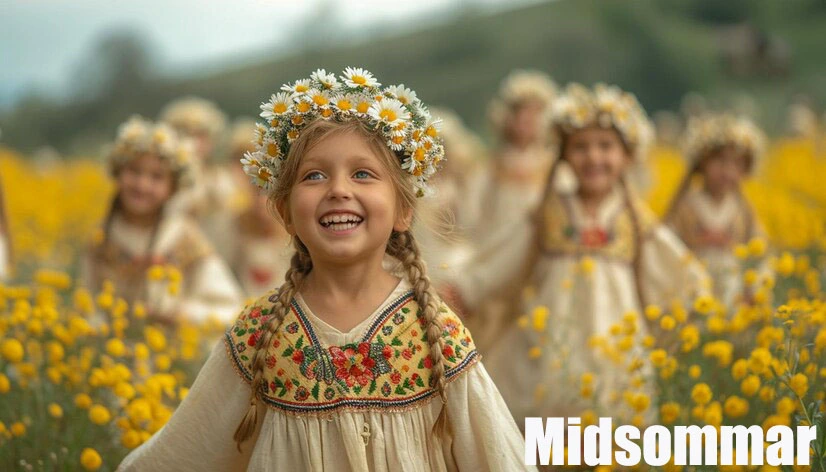Midsommar, directed by Ari Aster, is a cinematic experience that delves into the complexities of grief, relationships, and cultural horror. Released in 2019, this film has captivated audiences with its haunting beauty and disturbing narrative. Let’s explore what makes Midsommar a unique and unforgettable horror movie.
Plot Overview
Setting the Scene
Midsommar begins with a tragic event that sets the tone for the entire movie. Dani, the protagonist, experiences a devastating loss that leaves her emotionally shattered. Seeking solace, she joins her boyfriend, Christian, and his friends on a trip to Sweden to attend a midsummer festival in a remote village.
The Festival
The village, Hårga, is home to a pagan cult that practices ancient rituals. What starts as a seemingly idyllic retreat soon turns sinister as the true nature of the community’s customs is revealed. The festival, initially vibrant and enchanting, becomes increasingly disturbing and dangerous.
Themes and Symbolism
Grief and Healing
At its core, Midsommar is a story about grief. Dani’s journey is marked by her struggle to cope with her loss and find a sense of belonging. The film portrays her emotional turmoil and the ways in which the cult’s rituals, though horrifying, offer her a twisted form of healing.
Cultural Clash
Midsommar also explores the clash between modernity and ancient traditions. The American visitors’ disbelief and discomfort contrast sharply with the villagers’ deep-rooted beliefs. This cultural collision adds a layer of tension and unease, highlighting the power and danger of blind adherence to tradition.
Relationship Dynamics
The film scrutinizes the deteriorating relationship between Dani and Christian. Their interactions reveal themes of manipulation, dependency, and emotional disconnect. The cult’s communal lifestyle starkly contrasts with the couple’s fractured bond, ultimately leading to a shocking resolution.
Visual and Cinematic Style
Daylight Horror
Ari Aster breaks traditional horror conventions by setting most of Midsommar in broad daylight. The constant daylight of the Scandinavian summer creates a disorienting and surreal atmosphere. The bright, picturesque setting juxtaposed with the dark, horrific events heightens the film’s unsettling impact.
Symbolic Imagery
The film is rich in symbolic imagery and meticulous details. From the intricate flower crowns to the cryptic murals, every visual element serves a purpose. These symbols foreshadow events, convey deeper meanings, and immerse the audience in the world of Hårga.
Sound and Music
The eerie sound design and haunting score by Bobby Krlic (The Haxan Cloak) enhance the film’s unsettling ambiance. The music mirrors the characters’ emotional states and the escalating tension, adding another layer to the immersive experience.
Critical Reception
Acclaim and Critique
Midsommar received widespread acclaim for its originality, direction, and Florence Pugh’s standout performance as Dani. Critics praised Aster’s ability to blend psychological horror with cultural commentary. However, some viewers found the film’s slow pace and graphic content challenging.
Cultural Impact
The film has left a lasting impression on the horror genre, inspiring discussions about its themes, visuals, and ending. Midsommar’s unique approach has cemented it as a modern horror classic, influencing future films and filmmakers.
Conclusion
Midsommar is more than just a horror movie; it’s a profound exploration of human emotions, cultural rituals, and the dark side of human nature. Ari Aster’s meticulous craftsmanship and Florence Pugh’s compelling performance make it a film that lingers in the mind long after the credits roll. Whether you’re a horror aficionado or a casual viewer, Midsommar offers an unforgettable journey into the heart of darkness, wrapped in the deceptive beauty of a summer festival.
FAQs
What is the main plot of Midsommar?
Midsommar follows Dani, who joins her boyfriend and his friends on a trip to a Swedish village for a midsummer festival, only to discover the community’s sinister rituals.
Who directed Midsommar?
Midsommar was directed by Ari Aster, known for his work in the horror genre.
What themes are explored in Midsommar?
The film explores themes of grief, cultural clash, and relationship dynamics, using horror elements to delve into these complex topics.
Why is Midsommar set in daylight?
Ari Aster chose to set the film in daylight to subvert traditional horror conventions and create a disorienting and surreal atmosphere.











